The following photographs are of just a few of the birds that I have visiting my backyard every year during the winter. I also provided some information about each bird.
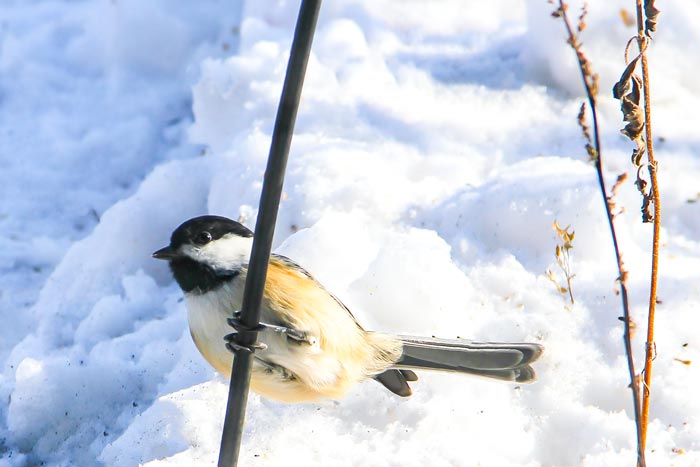
The black-capped chickadee Poecile atricapillus is a small, nonmigratory, North American songbird. They are the state bird of Maine and Massachusetts in the United States and the provincial bird of New Brunswick in Canada. The cap and bib are black, extending down just beyond their black eyes, making their small eyes difficult to see. The cheeks are white, the back is a soft gray, the wing feathers are gray-edged with white and the underparts are a soft buffy color on the sides turning to white underneath.
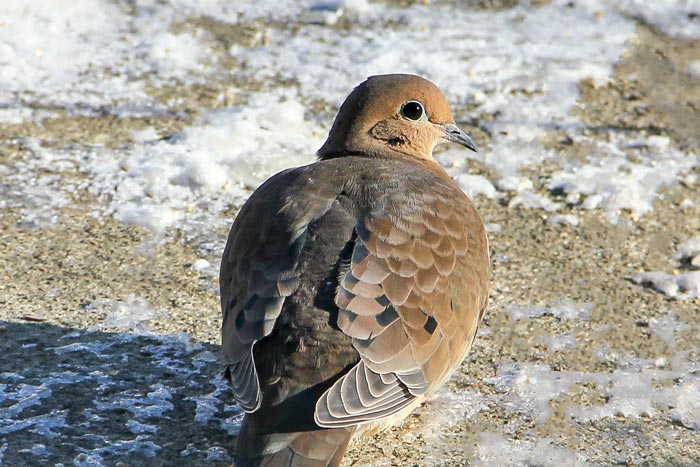
The mourning dove Zenaida macroura is a member of the dove family Columbidae.
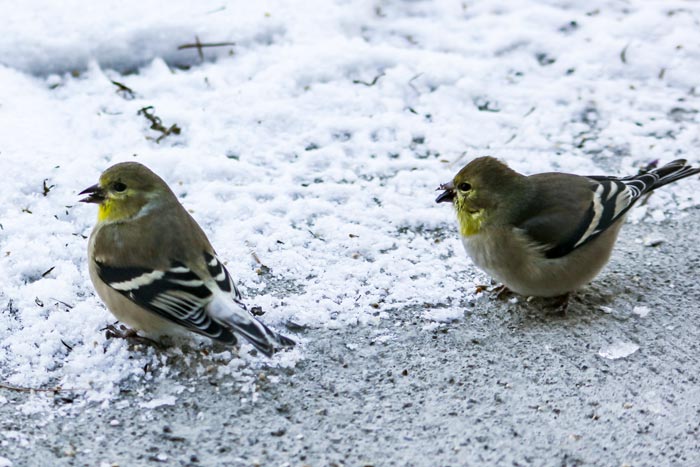
The American goldfinch Spinus tristis is a small North American bird in the finch family. These finches are migratory, ranging from mid-Alberta to North Carolina during the breeding season, and can be found just south of the Canada–United States border to Mexico during the winter. They are the state bird of New Jersey, Iowa, and Washington. During the spring, males are a brilliant yellow and shiny black with a bit of white. Females and all winter birds are duller but can be identified by their conical bill, pointed, notched tail, wingbars, and lack of streaking.
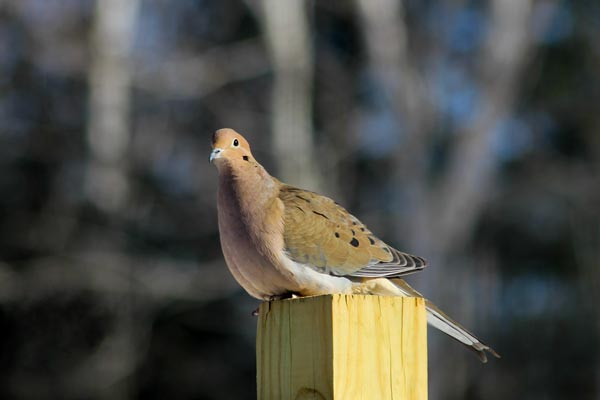
The mourning dove is one of the most abundant and widespread of all North American birds.

The barred owl Strix varia is native to eastern North America. These owls are large, with rounded heads, no ear tufts and medium length, rounded tails. They are mottled brown in color and white overall, with dark brown and almost black eyes. Their underparts have vertical brown bars on a white background, while the upper breast is crossed with horizontal brown bars. The wings and tail are barred with brown and white. Their hooting call, “Who cooks for you? Who cooks for you-all?” is a classic sound of the woods.
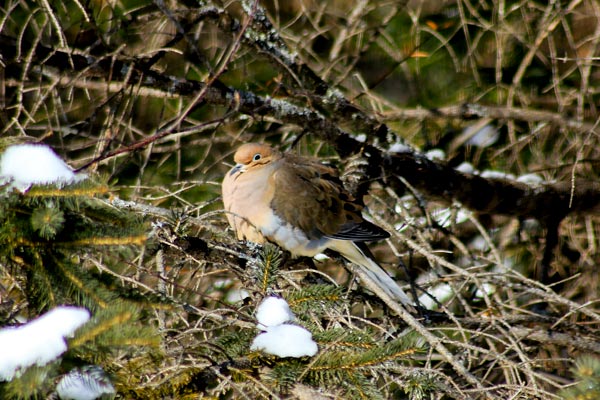
The mourning dove is also known as the American mourning dove or the rain dove, turtle dove, and once known as the Carolina pigeon or Carolina turtledove.
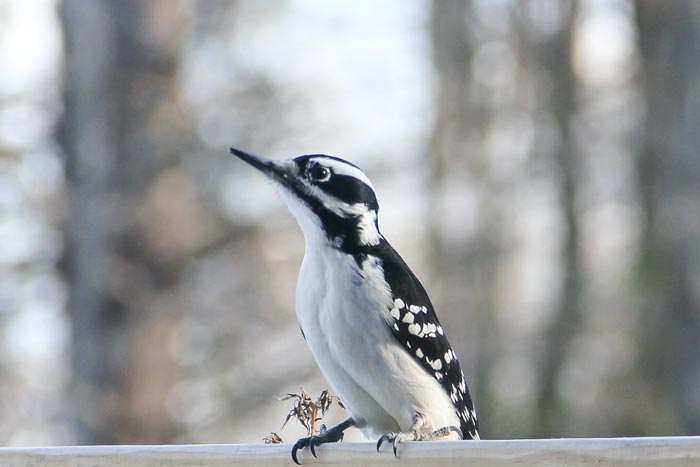
The hairy woodpecker Leuconotopicus villosus is a strong and medium-sized woodpecker, with a relatively long and sturdy bill. Hairy Woodpeckers are contrasting black and white in color. The black wings are checkered with white and the head has two white stripes. A large white patch runs down the center of its black back. Adult males have a red patch or two side-by-side patches on the back of the head and juvenile males have red or rarely orange-red on the crown.
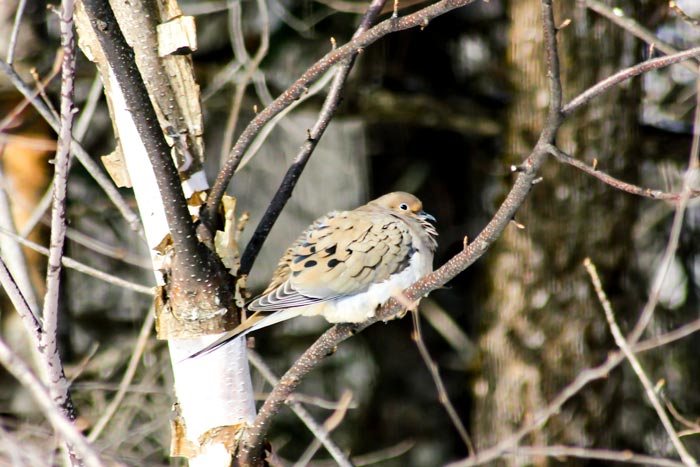
Mourning doves have plump-bodies and long-tails, with short legs, a small bill, and a head that looks too small in comparison to its body.
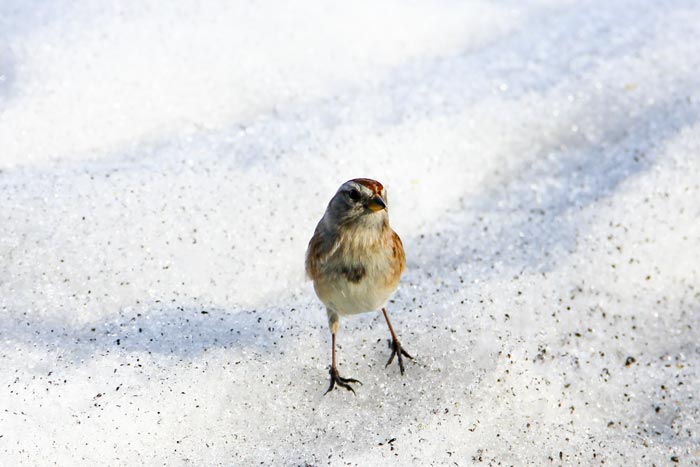
American tree sparrows Spizelloides arborea are a frequent visitor during the winter across southern Canada and the northern United States. These sparrows have a rusty cap and gray underparts with a small dark spot on its breast. They have long tails and plump bodies with a rust back with lighter stripes and brown wings with white bars. Their faces are gray with a rusty line through the eye. The upper mandible of the bill is dark and the lower is yellow.
Leave a Reply